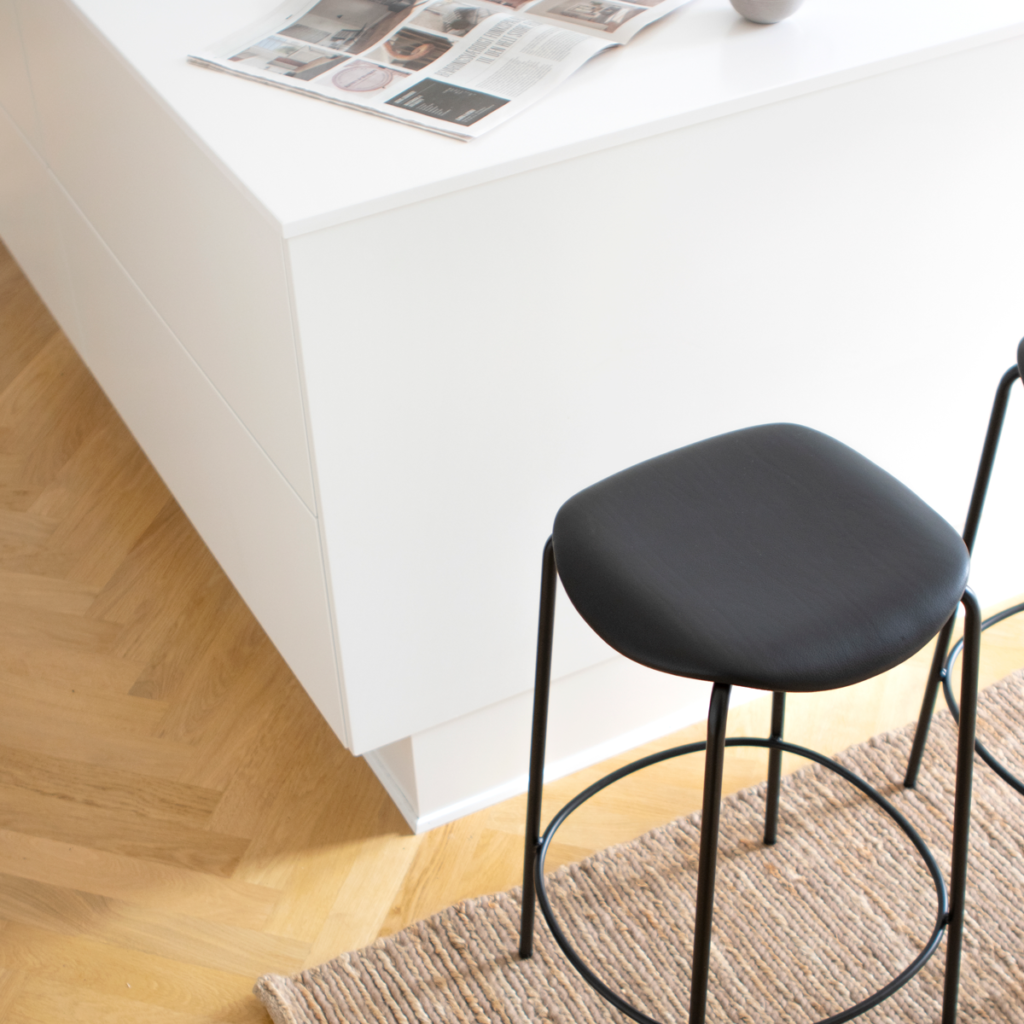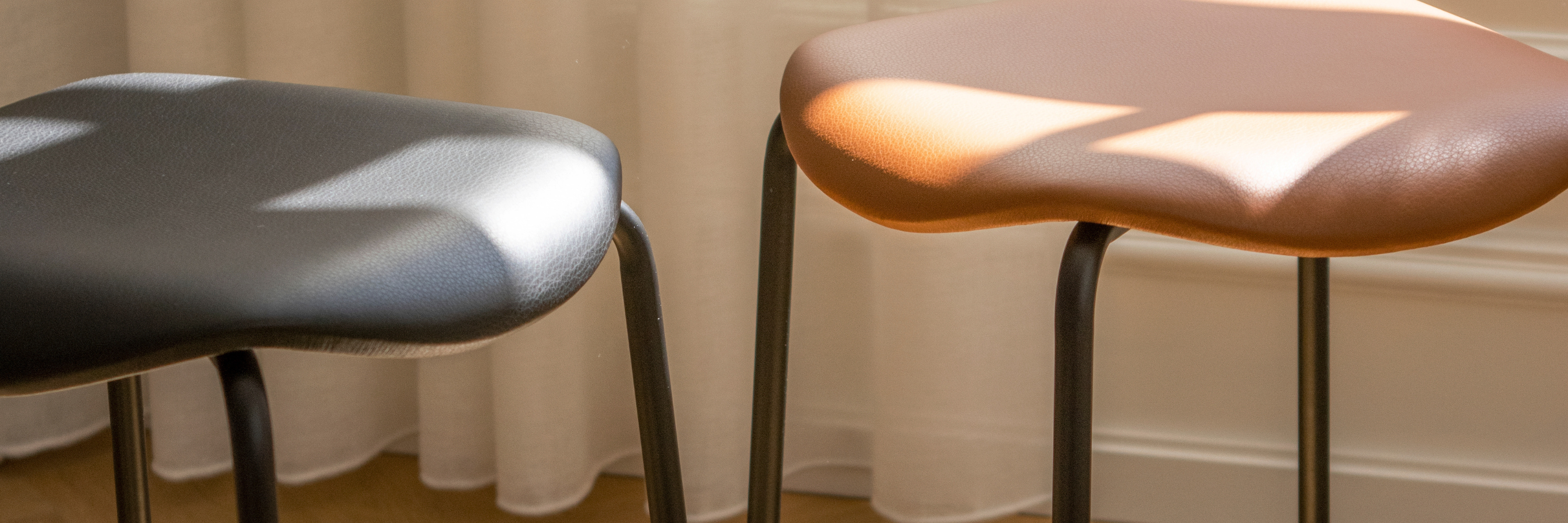SPOOR leather
You are always sure to get leather of the finest quality when you choose leather for your furniture at MAKE nordic. And with SPOOR leather you get traceable leather. And what does that mean? Yes, this means that the leather your furniture is upholstered with can be traced back to the animal it came from.

Traceable leather - how?
When you choose leather from SPOOR, every hide can be traced back to the individual animal it came from. All animals originate from Northern Europe – in Denmark, Sweden, Finland, Germany, and the Netherlands. Each animal is tagged at birth, and this ear tag remains part of the hide all the way to SPOOR’s tannery in Vester Skerninge, Denmark.
According to EU legislation, all cattle ear tags must be registered in a database containing information on the animal's country of origin, date and place of birth, any movements it has made during its lifetime, and the slaughterhouse responsible for the slaughter.

How will it be tracked?
At the tannery in Vester Skerninge, the ear markings on all hides are recorded. Using laser technology, each skin is imprinted with a unique number, which is linked to the animal's ear tag, and in this way the individual skin is assigned the animal's entire background history, which is your guarantee when you choose a piece of furniture with SPOOR leather.
Unlike other methods of identification, the laser marking is resistant and remains on the skin throughout the tanning and refining process to the final leather cut when your furniture is to be upholstered with SPOOR leather. In this way, we can guarantee that all SPOOR leather comes with 100% documented traceability all the way back to birth on the farm.

Animal welfare
The first regulations for the protection of farm animals in the EU date back to the 1970s, and the EU has thus advocated and regulated the welfare of farm animals for more than 40 years. In other words, there is a strong tradition of protecting the welfare of cattle from farming to slaughter in the EU.
The EU continuously works to improve legislation on the welfare of livestock on the farm, during transport and at slaughter. In line with the EU's new Farm to Fork strategy for more sustainable agriculture, the European Commission is currently evaluating all its farm animal welfare legislation.
Freedom of movement
- From the age of eight weeks, calves must not be confined in individual pens. If calves are placed in individual pens before eight weeks of age, the pens must have perforated walls so that the calves have direct visual and tactile contact.
- Tethering, which refers to tying the animal to something to keep it in a certain area, is only allowed, however, if the animal has sufficient space to meet its physiological and ethological needs.
Freedom from discomfort
- When calves are less than two weeks old, they must be provided with suitable bedding. This promotes the general health of the animal by encouraging rest, improving digestive health, insulating against cold weather and preventing body wounds from lying on a hard surface.
Freedom from pain, fear and distress
- To reduce distress and discomfort, cattle must not be transported for more than eight hours, unless the vehicle has been inspected and approved for long-term transport.
- The use of antibiotics for growth promotion is prohibited and the prophylactic use of antibiotics will be prohibited from 2022. This should encourage farmers in the EU to work to promote good animal health and increase the resilience of animals to to reduce the need for treatment.
- Pre-slaughter stunning is required for all animals to spare them any avoidable pain, distress or suffering at the end of their lives. However, exceptions can be made for religious slaughter in Germany and the Netherlands.



Environmental impact
All raw hides used for SPOOR leather go directly from the slaughterhouse to Scan-Hide for the initial tanning process. Scan-Hide has set itself the goal of reducing CO2 emissions from its production by 50% by 2030 and becoming CO2-neutral by 2050. The tannery is therefore continuously working to lower its climate footprint and works closely with suppliers to live up to these obligations.
OEKO-TEX®
Scan-Hide is the holder of the STeP by OEKO-TEX® certification, which is an independent, modular certification system for production facilities from the textile and leather industry. STeP by OEKO-TEX® considers sustainability aspects related to environmentally friendly production processes, worker health, safety and socially responsible working conditions. Social working conditions and health and safety and includes a comprehensive analysis and assessment of production conditions.
